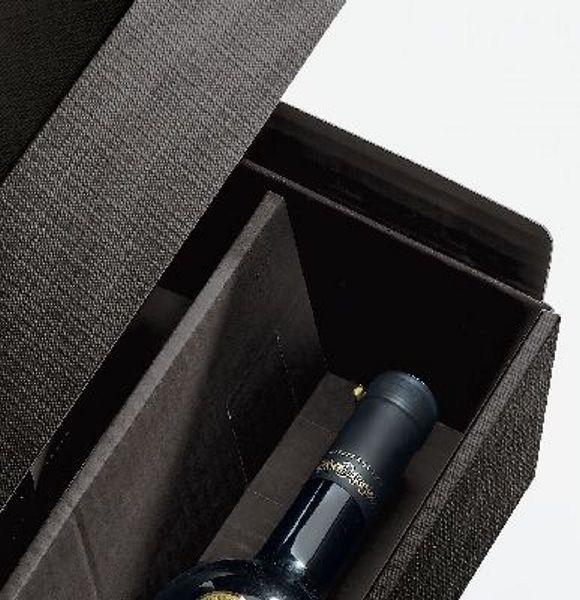Miles Madeira is synonymous with excellent Madeira wine and has become one of the best known and most respected brands in the world.
The firm that was eventually to become Miles Madeira was originally known as Rutherford & Brown, established on the Island of Madeira in 1814.
In 1856 Henry Price Miles left England with his family and arrived in Madeira. Having worked as an apprentice since the age of 12 under the tutelage of James Rutherford, he acquired sound knowledge and experience of the workings of the Madeira trade. In 1872, the Rutherfords left for London (due to Phylloxera which decimated most of the vineyards in Madeira) and started up a wine importing business at the Old Trinity House in Waterlane. This prompted Miles to purchase the company and stocks and he later made a gentleman's agreement with Rutherford that any Madeira sold by them in the United Kingdom, Scandinavia, or Russia would be bought through H. P. Miles and Co. This agreement was respected and carried on until the Rutherfords sold their firm Rutherfords, Osborne and Perkins to Martini Rossi in the 1960's.
Together with the wine production, H. P. Miles created the first brewery in Madeira in 1872 called the "Atlantic Brewery". It was in these two companies that he and his 2 sons, Henry Alfred and Charles Vaughan created the Miles legacy on the Island.
After the end of World War II, conditions in the wine trade became extremely difficult and Henry Alfred Miles' son, Cecil Miles negotiated the entry of H. P. Miles and Co. into the Madeira Wine Association. One of the lodges continues to be used exclusively for the ageing and maturation of the Miles' Vintages and older blended wines.
Madeira is a fortified wine made in the Portuguese Madeira Islands and, due to its unique vinification method, which involves heating the wine in special warehouses, it is one of the world’s longest lived wines and Vintage Madeira makes a superb birthday or anniversary present. This vintage Madeira has been aged in seasoned American oak casks in the traditional “Canteiro” system, whereby the casks were gradually transferred from the top floors of various wine lodges, where it is naturally warmer, to the middle floors and eventually to the ground floor where it is cooler during its maturation. The Canteiro method is only used for the highest quality Madeira, these wines are aged without the use of any artificial heat, being stored by the winery in warm rooms left to age by the heat of the sun. The Madeira wine is regularly racked and when it reaches the desired stage of maturity it is bottled. Vintage Madeiras will have a bottling date as well as the vintage (harvest year) on it. All vintage Madeiras are bottled under Madeira Wine Institute supervision.
Traditionally Madeira varies in style and sweetness depending on the grape variety that the Madeira is made from. Sercial produces the driest style, the rarer Tarrantez and Verdelho produce a Medium Dry style, Bual (sometimes call Boal) produces a Medium Rich style and Malvasia (also known as Malmsey) produces the richest and sweetest styles. Madeira is a complex, interesting wine and is made in virtually every vintage. Due to the unique “estufagem” process Madeira improves for days after opening and will also keep, once opened, for a month or more in a decanter.
Food-pairing
Cheeses such as blue cheeses, Stilton, Gruyere, manchego, & Emmenthal. Dried fruits.
Crème Brulee, caramel desserts based on apples, apricots, pecans, cherries, almonds, hazelnuts, dried figs & vanilla ice cream desserts. The excellent companion to a pipe, cigar or aromatic tobacco.
Grapes: Boal - Bual
Boal is the Portuguese name, Bual is the English name - synonymous is Bual de Madeira or Boal Cachudo - is mainly found in the south of the island at altitudes between 100 and 300m and in the North near São Vicente.
Alcoholcontnet
20%
Store & Serve
Always keep a Madeira wine upright.
The acids of Madeira are so strong that they attack the cork if the bottle is stored lying down
Serving: 18 ° C
Madeira is a wine that has ripened for several years in an oxidative environment, and then enters a reductive environment when bottling. It is therefore useful to open the bottles a few hours in advance. The bottles can then be kept almost unlimited, since the air has no influence on Madeira wines. In fact, the wine tastes better after months - if there still remains - after the bottle is opened.
Critics & Awards




 Ordering per bottle possible
Ordering per bottle possible Low shipping cost
Low shipping cost 


